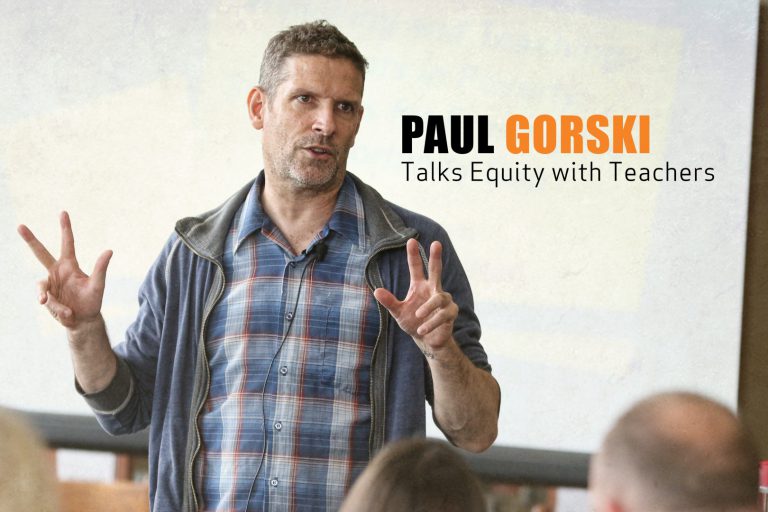

Paul Gorski Talks Equity with Teachers
On August 20, the Ames CSD held its annual “Kick-Off Breakfast” for all teachers and staff at Ames Middle School, with Paul Gorski serving as the keynote speaker. Gorski is the founder of Equity Literacy Institute and EdChange. He has 20 years of experience helping educators strengthen their equity efforts in classrooms, schools, and districts. He has published more than 70 articles and has written, co-written, or co-edited twelve books on various aspects of educational equity including Reaching and Teaching Students in Poverty: Strategies for Erasing the Opportunity Gap and Case Studies on Diversity and Social Justice Education.
Gorski was selected to keynote as a way to further deepen the District’s equity work that started last year with Dr. Katy Swalwell from Iowa State University, and Dr. Daniel Spikes. Their professional development with teachers will continue this year in the area of cultural competency. Talking about equity, or lack thereof, is a difficult topic for many people. “Equity is the process of wrestling with cognitive dissonance,” he said during his keynote, meaning that each individual must challenge what they hold as facts. According to Gorski, only then can we address equity.
A lack of equity is not an indication of people’s intentions, Gorski reminded the audience. Most people want to do the right thing. He acknowledged more than once that equity begins at the individual level. “First we have to be able to see them, then we need to be able to address them.” Then, Gorski challenges, “What are the knowledge and skills I need to become a threat to the existence of inequity in my sphere of influence? Do I have the will to be that threat?”
Professional development will continue with Drs. Swalwell and Spikes this year, but Gorski’s keynote was a kickstart for many teachers to have conversations with each other and to question things within their sphere of influence. Across the District, we must commit to challenging what we think we know. Why do we have an opportunity gap for some students? Are some students tracked into certain classes more favorable than others? Do our practices and policies at the building and District level marginalize groups of students?
Gorski admitted that many people want practical strategies to tackling inequity, but it’s not that simple. First, we must work on our ideology and then ask ourselves if, “we individually have the humility to change our thinking on what we are doing.” Addressing equity is not about calling policies and practices racist or unfair. As a school district, we are in the business of doing what is best for each student. What was once a great idea, we may now realize is not great for every student. So what does tackling inequity look like to Gorski? It’s first learning how to see inequity. Then we make decisions within our sphere of influence. After that, we address things with an equity lens. It looks like conversations with each other, challenging each other’s thinking. It’s not always concrete strategies, and it’s certainly not always bulleted items.
